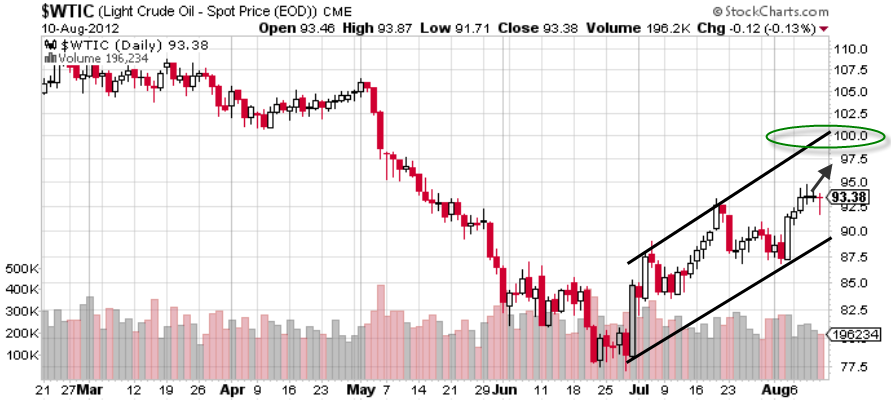October was all about earnings season for the Crabtree Technology model. Of the 50 companies represented in our Covestor model, 35 reported their September quarters between October 10 and November 9.
The other 15 holdings either will report in the next week or so, or have quarter-ends other than September 30. Overall we were pleased with the performances of our holdings, particularly in light of the weakening economic background, most notably in Europe.
In particular, I’d like to highlight recent Crabtree addition EnerNOC (ENOC). EnerNOC is a “smart grid” company; they sell software to utilities, companies and other enterprises that either generate or use large amounts of electricity.
EnerNOC’s “demand response” application helps balance supply and demand in a power grid by reducing or discouraging power use during peak periods of demand. In my opinion, EnerNOC has overcome some concerns about its accounting practices and continues to diversify geographically (e.g. Western Australia, Texas) and by adding applications (e.g. carbon emission management) to its core demand response franchise.
Perhaps best of all, EnerNOC is a stronger performer among “green” investments, and contrasts nicely with the many solar, wind and LED companies whose strong “performance” in years past was due to the unsustainable influence of government subsidies both in the United States as well as in China, Germany and other offshore locations. When it reported its September quarter on November 5, EnerNOC beat Street estimates for Q3 and raised its revenue and operating income guidance for the balance of 2012 as well for 2013.
Sadly (but realistically), not all of our holdings impressed us with their third quarters. Two of our holdings, Pericom Semiconductor (PSEM) and LSI Corp. (LSI) both reported underwhelming quarters with un-Crabtree-like qualities. We’ll be reviewing those two along with the rest of our holdings as we prepare for our mid-November re-balance of the Crabtree Technology model.
Before we review the model’s October performance, we’d like to follow-up on former Crabtree holding Zillow (Z). As noted here, we sold our Zillow position in August after reviewing the real estate information company’s June quarter. We had become concerned that Zillow’s rapidly declining revenue growth, combined with lower-than-expected profit margins were at odds with the stock’s steep valuation.
And as it turned out, Zillow reported its third quarter on November 5, and disappointed investors by again lowering its expected revenue growth and profitability for its fourth quarter that will end on December 31. So we are understandably glad to no longer be shareholders.
It’s important to recognize that at Crabtree Asset Management, we make no claim for having better information than our competitors. Rather, we feel we take information available to all and we believe we apply it in a more constructive way across a larger universe of investable companies.
Put another way, we’d rather know a few important things about all the companies in our universe, than know everything about a few companies in that universe but nothing at all about the rest. What we “knew” about Zillow was what everyone knew, but our experience tells us that a company with those characteristics is going to underperform. Not always…just most of the time. That’s where experience pays off: not always, just most of the time.
Meanwhile, October performance for the Crabtree Technology model was very good, at least in comparison to our benchmarks. The model declined by 2.3% net of fees in October. By comparison, our Covestor benchmarks the Nasdaq 100 (NDX) fell 5.4%, and the S&P 500 (SPX) fell 2.0% during the month of October. Our internal benchmark, the Merrill Lynch Technology 100 (MLO) declined 4.8%.
In our next investor letter, we’ll discuss the results of our November model re-balance and discuss our outlook for 2013. But you can reach us at info@crabtree-am.com if you have any questions.
The investments discussed are held in client accounts as of October 31, 2012. These investments may or may not be currently held in client accounts. The reader should not assume that any investments identified were or will be profitable or that any investment recommendations or investment decisions we make in the future will be profitable.
Any index comparisons provided in the blogs are for informational purposes only and should not be used as the basis for making an investment decision. There are significant differences between client accounts and the indices referenced including, but not limited to, risk profile, liquidity, volatility and asset composition. The S&P 500 is an index of 500 stocks chosen for market size, liquidity and industry, among other factors. The NASDAQ-100 is a stock market index of 100 of the largest non-financial companies listed on the NASDAQ. The Merrill Lynch 100 Technology Index (MLO) is an equal-dollar weighted index of 100 stocks designed to measure the performance of a cross section of large, actively traded technology stocks and ADRs.




